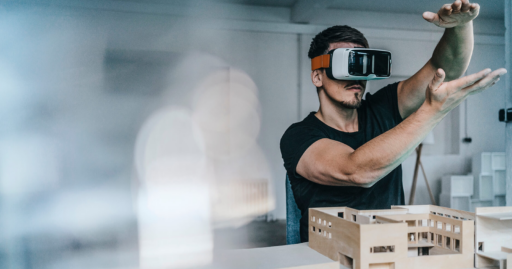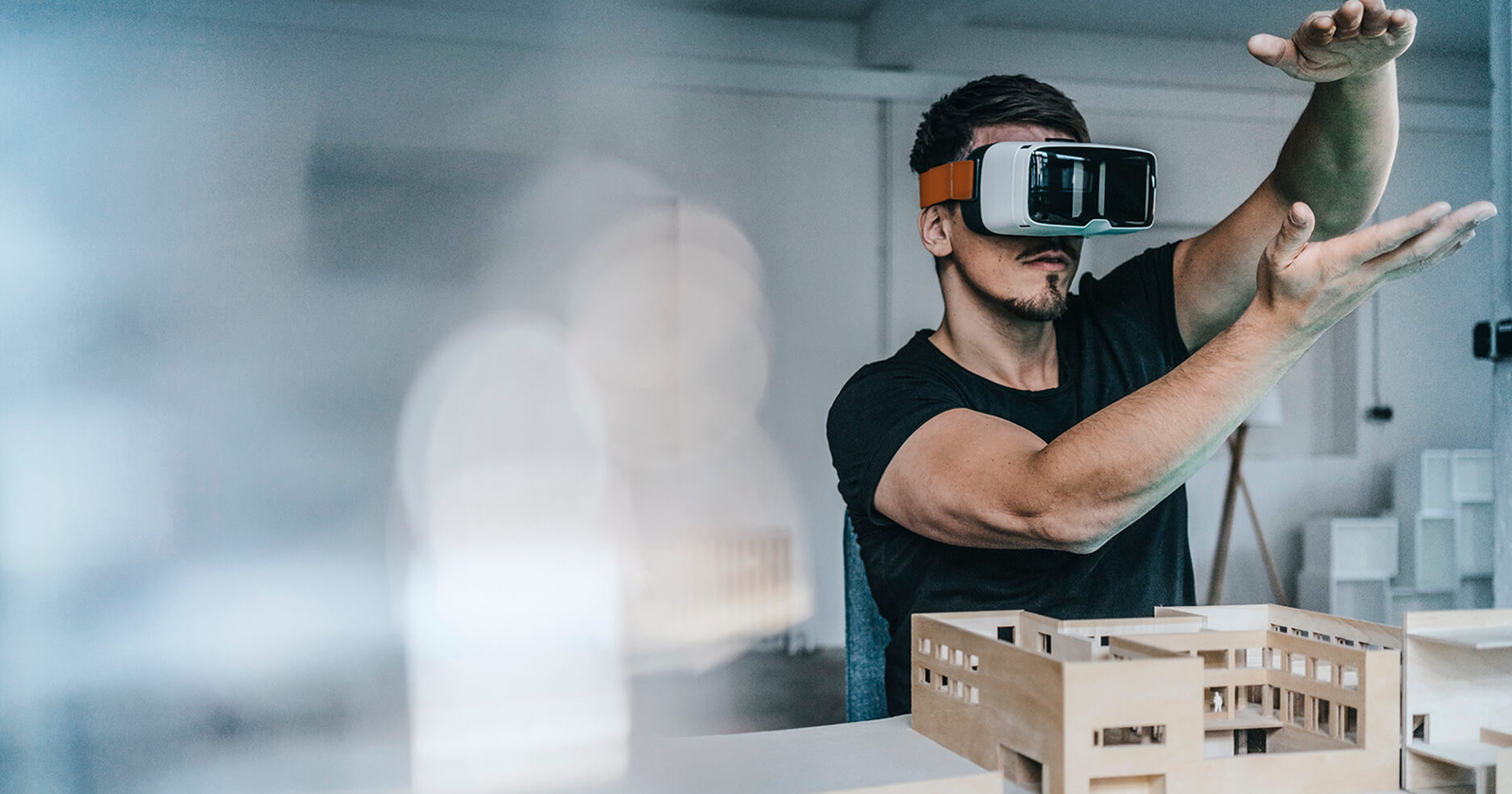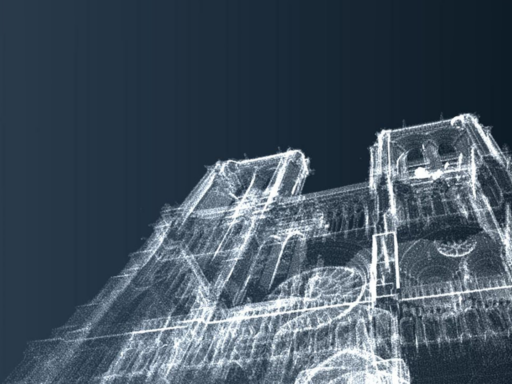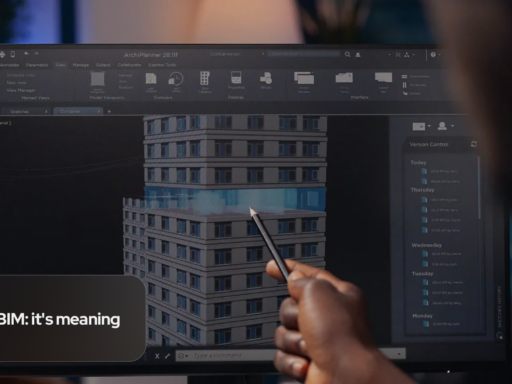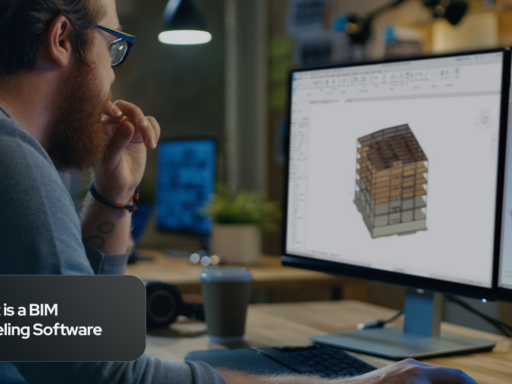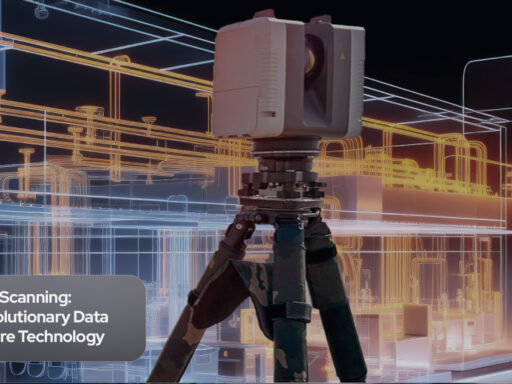Introduction
In the intersection between technology innovation and the construction industry, the combination of BIM (Building Information Modeling) and augmented reality has emerged as a disruptive force in visualization fields.
“Today we are only seeing the beginning of all the benefits that the synergy between these technologies will bring us in the future. The ability to make informed decisions early on through the virtualization of a project will bring us benefits that, as of today, we have not yet fully realized.” – Josefina S., Architect
The integration of BIM and augmented reality is pushing the boundaries of this synergy offering a unique experience by allowing the superposition of 3D digital models generated with BIM (Building Information Modeling) onto the physical environment.
Highlights
- The combination of BIM and virtual reality is transforming the visualization and experience of construction projects.
- Virtual reality technology has diversified, offering a wide range of devices and platforms for construction applications.
- The integration of BIM and augmented reality on construction sites allows for precise visualization of structural elements and minimizes errors and risks.
- Mixed reality is reshaping the way designers and architects visualize their projects, enabling real-scale exploration and adjustments.
- Immersive presentations using BIM and augmented reality enhance client interaction and collaboration in the creative process.
- Challenges such as platform integration and data management need to be addressed for the widespread adoption of BIM and augmented reality in the construction industry.
Introduction to BIM and Augmented Reality in Construction
Building Information Modeling allows you to create 3D models of construction projects, providing a comprehensive view of the entire project. Augmented Reality enhances this experience by overlaying digital information onto the real-world environment, allowing you to see virtual elements within the physical space. This combination of BIM and Augmented Reality is transforming the way construction professionals plan, design and execute their projects.
- BIM enables you to create accurate 3D models of construction projects.
- Augmented Reality overlays digital information onto the real-world environment.
- Together they provide a comprehensive and immersive visualization experience for construction projects.
Construction professionals need a way to accurately visualize and plan their projects. BIM and Augmented Reality provide a solution before they are built. This technology allows buyers to gain a better understanding of the project, make informed decisions, and identify any potential issues before construction begins.
“The future of construction technology looks promising with the integration of mixed reality, AI, and cloud-based collaboration.” – Carola Bretz
The Power of Mixed Reality in Construction
Augmented reality technology has evolved to offer a diverse range of devices and platforms. Smart glasses and augmented reality headsets are now widely available, expanding the applications of augmented reality in construction. These devices provide enhanced visualization of construction projects, allowing for improved collaboration and decision-making. The availability of different devices has expanded the potential of augmented reality in the construction industry.
Integrating BIM and mixed reality on construction sites brings benefits:
- Precise visualization of structural elements is made possible through the combination of BIM and mixed reality, allowing for enhanced project planning and design validation.
- By minimizing errors and risks, the integration of BIM and mixed reality contributes to improved safety and efficiency on construction sites.
- This integration also facilitates real-time collaboration among project stakeholders, leading to better decision-making and problem-solving.
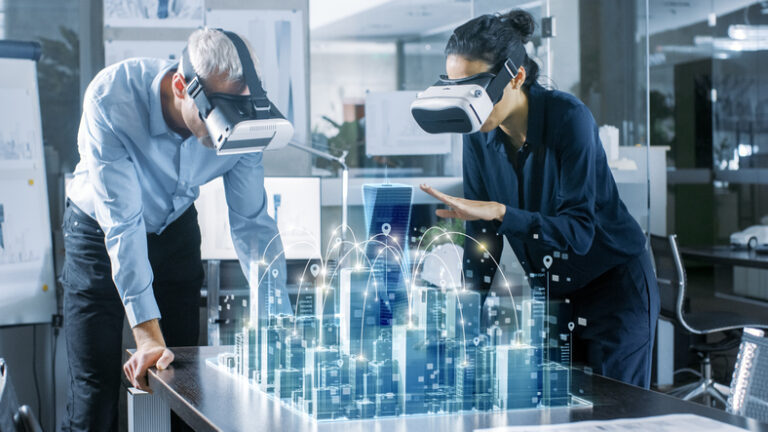
Transforming Design and Architectural Visualization
When it comes to transforming design and architectural visualization in the construction industry, BIM and Augmented Reality are truly game-changers. With BIM, we can create and manipulate 3D models, allowing for a more immersive and interactive experience. Augmented Reality takes this a step further by overlaying digital information onto the physical environment, providing real-time insights, and enhancing the visualization process.
Designers and architects need solutions that facilitate collaboration and communication with their teams and clients, as well as the ability to make real-time adjustments to designs. With BIM and Augmented Reality, they can gain a competitive edge by creating more accurate and realistic visualizations, leading to improved communication with stakeholders and ultimately, better project outcomes.
- Immersive visualization: Augmented reality allows designers and architects to immerse themselves in their projects, experiencing them in a whole new way.
- Enhanced collaboration: With mixed reality, teams can collaborate more effectively by visualizing and interacting with 3D models in real-time, regardless of their physical location.
- Real-time adjustments: BIM and augmented reality enable real-time adjustments to designs, allowing for quick iterations and improvements.
- Enhanced client communication: By using mixed reality, designers and architects can effectively communicate their vision to clients, offering a more immersive and engaging experience.
“70% of projects are failing due to a lack of collaboration, communication, and lack of risk and quality control.”– Trienpont International
Enhancing Client Interaction and Participation
With BIM and Augmented Reality, clients can experience a virtual walkthrough of the construction project in a real-time interactive experience, allowing them to visualize the final outcome in a more immersive way. These technologies enable clients to provide feedback and make decisions based on a more comprehensive understanding of the project.
- BIM and Augmented Reality provide a more immersive visualization experience for clients.
- Clients can interact with the project in real time, making decisions based on a better understanding of the final outcome.
- These technologies enable clients to provide feedback and make decisions based on a more comprehensive understanding of the project.
In the construction industry, clients need to actively participate in the planning and design process to ensure that their vision is accurately captured and executed. By leveraging BIM and Augmented Reality, they can have a more hands-on approach to the project, leading to increased satisfaction and a stronger sense of ownership. These technologies also allow clients to identify potential issues early on, leading to more efficient and cost-effective project management.
The Future of BIM and Mixed Reality in Construction
In the construction industry, we need advanced visualization tools that can enhance project planning and design processes. It requires efficient collaboration solutions to streamline communication and decision-making among teams. We are always seeking innovative technologies that can improve project efficiency and reduce errors during the construction phase.
This technology provides real-time collaboration among stakeholders, enabling them to make informed decisions and resolve issues efficiently. With BIM and mixed reality, we can explore 3D models of buildings and infrastructure in a lifelike manner, gaining a deeper understanding of the project.
These are some of the benefits that BIM and augmented reality can bring us in the future in our projects:
- Enhanced visualization: With BIM and mixed reality, construction professionals can visualize complex building designs in a more immersive and interactive way, allowing for better understanding and decision-making.
- Improved collaboration: BIM and mixed reality enable real-time collaboration among architects, engineers, and construction teams, leading to more efficient communication and problem-solving during the construction process.
- Enhanced safety: By using mixed reality, construction workers can visualize potential hazards and safety protocols in a more realistic manner, leading to a safer working environment.
Conclusion
In conclusion, the integration of BIM and augmented reality represents a significant point in the evolution of the construction industry. It improves efficiency on construction sites and transforms the way we visualize and present designs and projects.
As we continue to explore and harness these tools, the boundary between the digital and physical worlds in construction becomes increasingly blurred, giving rise to smarter, more efficient, and more sustainable construction environments. The future of new technologies in construction, with the integration of mixed reality, holds great promise for the industry.

